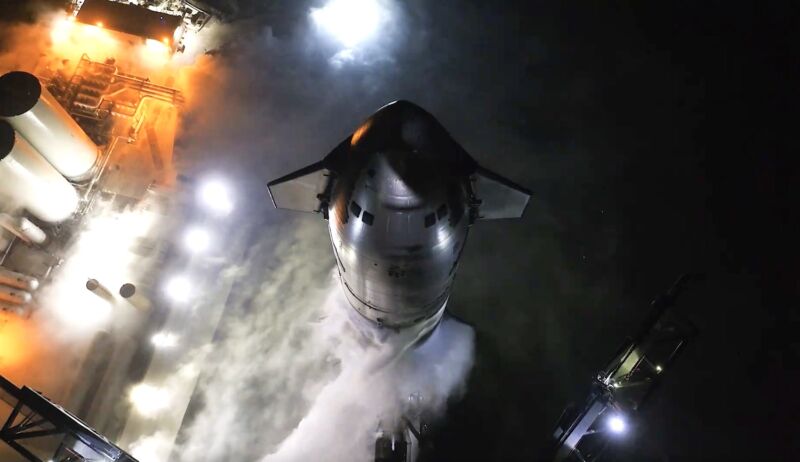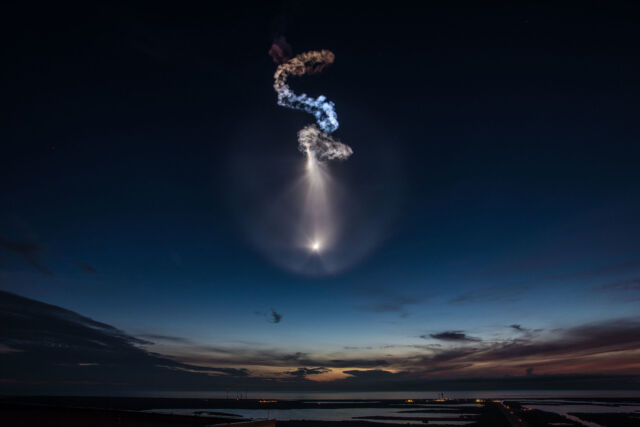
The Federal Aviation Administration mentioned Wednesday it has authorized a business launch license for the third full-scale check flight of SpaceX’s big Starship rocket.
That is the final regulatory hurdle earlier than SpaceX can launch Starship from South Texas. The third flight of the world’s strongest rocket, following a pair of check launches final 12 months, is scheduled for Thursday morning.
SpaceX’s Starship rocket and Tremendous Heavy booster will take off from the Starbase check website on the Texas Gulf Coast, a number of miles north of the US-Mexico border. The launch window for the practically 400-foot-tall (121-meter) rocket opens at 7 am CDT (12:00 UTC) Thursday and extends for 110 minutes.
“The FAA decided SpaceX met all security, environmental, coverage and monetary accountability necessities,” the regulatory company mentioned in a press release.
“The license applies to all phases of the proposed OFT-3 (Orbital Flight Check-3) operation,” the FAA mentioned. “This contains preflight preparations and liftoff from Texas, the water touchdown of the Tremendous Heavy booster within the Gulf of Mexico, and the water touchdown of the Starship automobile within the Indian Ocean.“
That is the primary time SpaceX will goal the Indian Ocean for splashdown of Starship. The 2 check flights final 12 months had been purported to culminate in a splashdown within the Pacific Ocean, however SpaceX has altered the trajectory for this launch as a way to accomplish a number of extra check goals, together with the restart of a Raptor engine in area for the primary time.
The FAA carried out a “tiered environmental evaluation” to check the environmental results of a Starship reentry and water touchdown within the Indian Ocean. Federal officers signed off on SpaceX’s proposal.
Inexperienced board
If Starship will get off the bottom on the opening of Thursday’s launch window, it could elevate off practically 40 minutes earlier than dawn at Starbase. This could be the primary evening launch of Starship, however the timing of liftoff may very well be shut sufficient to dawn to permit daylight to light up the rocket’s increasing engine plumes because it climbs into the higher environment.
Twilight launches are spectacular and sometimes produce a so-called “jellyfish” impact as daylight displays off ice crystals in a rocket’s exhaust path. This colourful phenomenon is visually putting in opposition to a darkish sky earlier than dawn or after sundown. In fact, the visibility of a rocket’s jellyfish exhaust path is determined by cloud cowl, however assuming clear skies, a Starship launch on the opening of the launch window Thursday may very well be seen from as far-off as Houston and different elements of the Gulf Coast.
The climate outlook for Thursday at Starbase seems to be typically favorable when it comes to cloud cowl, there aren’t any thunderstorms within the official Nationwide Climate Service forecast. Nonetheless, forecasters predict breezy circumstances in a single day Wednesday into Thursday, with gusty winds of 20 to 30 mph. SpaceX hasn’t mentioned what the wind restrict is for a Starship launch. There may be additionally an opportunity of patchy fog in a single day into Thursday morning, however this isn’t anticipated to be an element within the launch aside from for viewing circumstances.

The outcomes from the primary Starship check flight final April had been combined. The blast from the rocket’s Raptor engines broken the launch pad, and several other of the booster’s engines failed earlier than the automobile tumbled uncontrolled and self-destructed a couple of minutes after liftoff.
SpaceX upgraded the pad with a water deluge system to guard the bottom infrastructure at Starbase from the blast and warmth generated by the Tremendous Heavy booster’s 33 Raptor engines. Engineers additionally made enhancements in engine reliability, and adjusted the way in which Starship’s higher stage separates from its Tremendous Heavy booster a couple of minutes into the flight. SpaceX additionally launched a brand new “sizzling staging” method, which entails igniting the higher stage’s six Raptor engines a fraction of a second earlier than stage separation.
All these modifications labored like a attraction on the second Starship launch in November, and the Starship higher stage practically reached its goal velocity. Throughout a deliberate vent of extra liquid oxygen, Starship developed a leak that resulted in a “combustion occasion,” in the end inflicting the rocket’s pc to challenge a self-destruct command.
The Tremendous Heavy booster was supposed to try a managed splashdown within the Gulf of Mexico in a check of SpaceX’s plans to get well and reuse the large Starship first stage. The booster additionally self-destructed within the higher environment after a few of its engines, which had been purported to information it again towards an offshore splashdown zone, misplaced stress of their oxidizer turbopumps. SpaceX traced the reason for this downside to filter blockage within the liquid oxygen provide.
